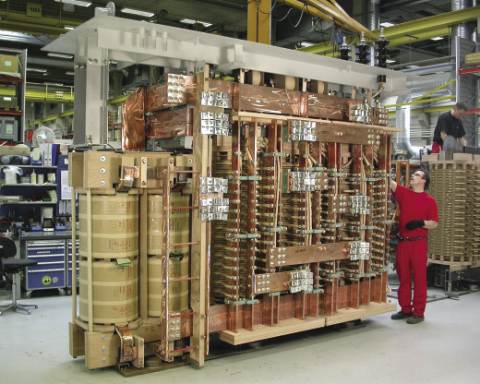What is a rectifier transformer?

ABB Rectifier Transformer
I've recently come across this question a couple times browsing the internet. Decided to give a quick answer here.
A rectifier transformer is a transformer which includes diodes or thyristors in the same tank. Voltage regulation may also be included. Rectifier transformers are used for industrial processes which require a significant direct current (dc) supply. Typical processes would include dc traction, electrolysis, smelting operations, large variable speed drive trains, etc.
The application for which the transformer is used, will drive the design considerations including:
- bridge type connection of the thyristors for higher voltages
- interphase connection for low voltage, high current applications
- number of pulses (6, 12 and higher with phase shifting)
- eddy current and harmonic issues
Voltage regulation is achieved with no-load or on-load tap changers on the high voltage side. Fine levels of voltage regulation can be achieved using saturable reactors on the secondary side. Regulation units may be built in or separate.
If anyone has any comments or rectifier transformer experience to share, please add it below.